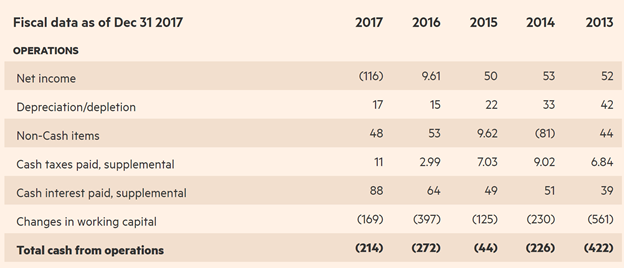For every financial report which comes our way, the key disclaimer of “Past performance does not predict future returns” is peppered throughout the report. While we can never be certain of whether past successes would repeat themselves, past failures tend to have an uncanny habit of rearing its ugly head when we least expect it.
[timeless]
Q2 hedge fund letters, conference, scoops etc
One of the key trends persisting over the last few years was the phenomena of investors stretching for yield as interest rates remained at record low levels.
Investors have been searching for investments opportunities which could yield them high yields. Corporations rode the wave and offered high yield corporate bonds or high dividends to attract investments from the market.
The high yields from these products served to attract investors to subscribe for these securities at the point of issue. Yet, fast forward several years later and not all has been well in the corporate bond market.
Some of the corporate bond defaults in the Singaporean market starting with Swiber to the recent Hyflux remain fresh in our mind as investors learn that it is possible for corporate bonds to default on their coupon payments.
A key takeaway point from the spate of corporate bond defaults would be to not only focus on the coupon rate of the bonds, but also to pay keen attention towards the credit quality of the bonds.
What do we mean by credit quality? If we were to look back to 2016 when the bonds were issued, Hyflux was not generating positive cash flow for the business.
Not only was the business not cash flow generating, Hyflux also had debts which were due to be repaid soon.
Before the issuance of the perpetual bonds, Hyflux’s net gearing ratio (net debt to equity ratio) was 0.98. Subsequent to the issuance of the perpetual bonds, Hyflux would need an additional SGD 18 million in cash to pay out the coupon payment annually.
Hyflux 5 Year Operating History – Source FT.com
Based on the historical cash generation ability of the company, one might have second thoughts as to whether Hyflux would be able to generate the necessary cash flow to pay out the coupon payment.
Hyflux was highly leveraged, they had a weak cash flow and was taking on more debt to pay off existing debt and added further financial burden to their liabilities. As they were unable to strengthen their cash generating abilities, it came as no surprise that they ultimately defaulted on their coupon payment in May 2018.
Even if you do not invest in bonds, looking at the free cash flow strengths of the companies you invest equity into is crucial too. A market darling in recent years was Starhub Ltd.
The market has celebrated Starhub as a popular investment option due to its high dividends and strong position in the market. Similar to the coupon rates in bonds, high dividend rates cannot be the only reason for you to invest into a company.
A second crucial question which you would have to ask yourself is whether the company can sustain the high dividend rates?
In order to answer this question, we would once again have to look at the free cash flow for Starhub Ltd over the past few years.
A company can only pay dividends out of their cash flow after paying its bills and maintaining their existing business. A company can also access additional cash liquidity through various debt instruments beyond the cash flow which is generated by the business.
Source: Heritage Global Capital Fund Year End Review
If we were to look at Starhub’s financial performance over the past few years. We can see that since 2013, Starhub has consistently paid out more cash dividends to shareholders than the free cash flow which the business generates.
This might suggest that they are supporting the dividend payout by funding it via existing cash reserves or by taking on additional debt which they would have to repay in the long run.
If Starhub was to sustain their high dividends over the long run without significant improvement in their profitability, they would have to generate more debt to sustain their dividends which is unhealthy for their financial position in the long run.
While past performance does not predict future returns, understanding past failures helps us avoid making the same mistakes in the future. Investors who have kept their eye trained solely on high dividend yields or high coupon rates is an age old mistake that ultimately leads to disappointments.
In order to avoid such disappointments, investors would be well advised to spend time thinking about whether the high dividend or high coupon rates are sustainable in the long run by taking a close look at the free cash flow position of the companies!
Article by Jun Hao, The Asia Report


